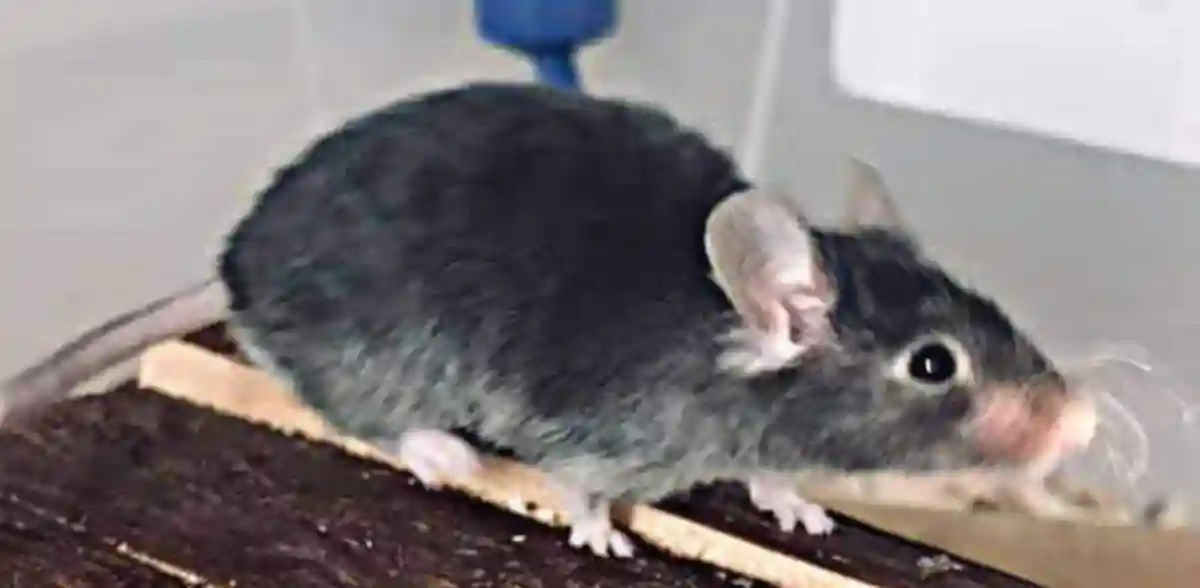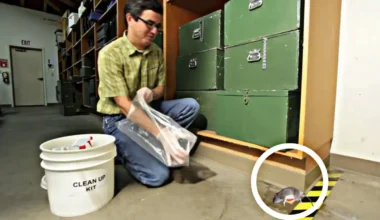It can be difficult to tell if a wild mouse has a disease but it is important to do so since some diseases that affect mice can also affect humans. It is for this reason that humans are advised not to touch or pick up a mouse with bare hands.
How to tell if a wild mouse has a disease

When assessing a wild mouse’s health, keep in mind the following:
1. Sickly physical appearance
Examine the mouse’s overall appearance. A typical healthy mouse has gleaming fur, bright eyes, and is active. Thus, a sick mouse will look thin, and lethargic, with dull fur and cloudy eyes. Notice its movement too, it’ll be somewhat sluggish as if it lacked energy. The tail will be limp and its whiskers will be wilted, making the mouse look sad and pitiful.
You should also notice swelling and sores on the critter, which indicate a skin infection.
2. Lumps or bumps on the body
If you notice lumps or bumps on a mouse’s body, it has a disease. These growths can be either hard or soft, and vary in size and texture. Lumps or bumps on a mouse are typically caused by conditions such as infections, tumors, cysts, abscesses, etc. While some lumps may not bother the mouse, others may be painful and impair their mobility. If you think the poor critter deserves another chance, seek veterinary care. A veterinarian can examine the lump and determine the underlying cause and treat it with antibiotics, surgery, or other forms of therapy, depending on the diagnosis.
3. Breathing problems
Pay attention to the mouse’s breathing. A healthy mouse will breathe normally and steadily, however, a mouse with a disease may have difficulty breathing. It may breathe rapidly or wheeze.
4. Discharge
Look out for any discharge in the eyes, nose, and mouth of the critter—these are signs of sickness. There will be no discharge in a healthy mouse, while a sick mouse may have visible discharge in the eyes, nose, or mouth.
5. Hair loss
Even though hair loss helps to tell if a wild mouse has a disease, it can also be due to other factors such as aging, genetics, and hormonal imbalances. The degree of hair loss varies from mild to severe and can impact the overall appearance of the mouse. Hair loss in a mouse due to sickness can be caused by infections such as mites, lice, and ringworm.
6. Limp movement or abnormal gait
A healthy mouse will move normally and coordinately. However, a sick mouse may limp, has an abnormal gait, or is unsteady. This could result from a congenital defect or a nervous system disease.
The mouse will visibly have difficulty walking, running, and jumping, as well as a limited range of motion in its limbs. You can easily tell a mouse’s limp or abnormal gait from its uneven pace and unequal weight distribution on its hind legs.
7. Frequent body scratching
A wild mouse scratching its body repeatedly could be a sign that it has a disease. This behavior typically indicates that a wild mouse has skin irritation or parasites such as mites or fleas. If left untreated, it poses serious health problems and can be fatal.
8. General mouse behavior
A healthy mouse will move around actively, foraging for food and interacting with others. However, a sick mouse will be inactive, isolates itself, or has a decreased appetite. In some cases, if you encountered a mouse that won’t run away, it may be sick.
9. Eating less than normal
Have you tried feeding the rodent? Suppose it’s a wood mouse and it eats less than normal, it is a sign of illness. Note that it’s not legal in some states to feed wild animals. Per FindLaw, feeding any wildlife is illegal under animal harassment laws, and “Harassment” is legally considered any action that interrupts an animal’s “normal behavior patterns.’
Mice are naturally active and energetic and enjoy eating. Thus, so a sudden change in their eating habits could indicate that it carries a disease.
Read also: mice eating your plants? Do these
Do wild mice carry diseases?
Wild mice can carry and transmit diseases to humans and other animals. Salmonellosis, Hantavirus, bubonic plague, Lyme disease, and leptospirosis are examples of diseases a wild mouse can carry. Moreover, it can be hard to tell a mouse with this disease. The CDC, for example, confirms that it is hard to tell if a mouse carries a hantavirus, and they also recommend avoiding them.
These diseases can be spread by wild mice through their droppings, urine, saliva, and bites. They can also spread disease through contaminated food and water, as well as their fleas and ticks.
Can you get sick from touching a wild mouse?
You can get sick from touching a wild mouse. Mice can transmit diseases such as salmonella, hantavirus, and plague, as mentioned earlier. If you come in contact with mouse urine, feces, or bites, you risk infection. Depending on the disease severity, you may experience symptoms such as fever, headache, body aches, and difficulty breathing.
Conclusion
Some diseases in a mouse may not be visible until there is progress, so it is advisable to seek professional help if you suspect a mouse is sick. Ultimately, never handle a wild mouse with bare hands, whether it is sick or not.






